Audio History (The Early Years)
Jon began his employment career, as a teenager, working in central Michigan local radio. The small market stations being lean in the engineering staff allowed for a self-instructed course of "fixing the equipment to stay on the air". For some reason this was a feat that management was very supportive of!
Several of the stations allowed for both supervised, as well as non-directed renovations and upgrades to facilities. Jon had the opportunity to experience control room design, production space development, construction, soundproffing, wiring, analogue interface and audio proof of performance projects.
While attending Detroit's Wayne State University he acted as a paid teachers assistant in both the radio and television departments. In the radio lab he supervised the operation and engineering support of student operated WAYN. Television production was offered by the WSU CIT department for generation of educational programming for WSU, University of Detroit, Marygrove College, Macomb Community College and WTVS-56 the local PBS affiliate. Jon worked as a camerman and later as a TD/Director.
Jon served as chief engineer for Detroit recording studio, Artie Field Productions, at the time of the introduction of 16 track analogue recording. Responsibilities included project design, engineering, maintenance, recording, mixing and production; for recording studios, record companies and major advertising agency campaigns.
Audio History (Crest National)
At Crest National Jon has, over the years created multiple audio postproduction suites.

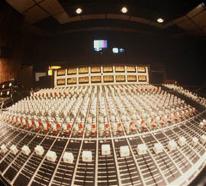
Analogue Recording Original Crest National 24 Track Console
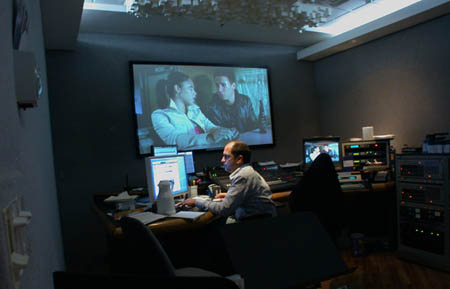
Audio A - Crest Nationals 5.1 Mixdown Theater
Originally all rooms were base on multi-track analogue tape formats. The rooms allowed for 35mm magnetic film playback in mono, stereo, 3 track, 4 track and 6 track formats,and were used in the editing and conforming of feature international soundtracks. As technology evolved the rooms advanced to full digital, disc based systems allowing for the production of Dolby 5.1 surround, DVD tracks.
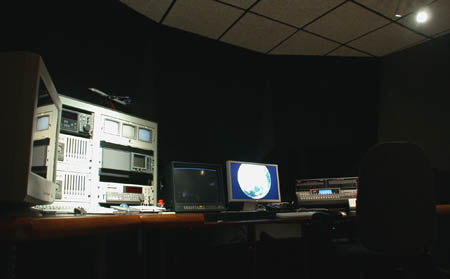
Crest National - Audio B
One special audio challenge he accepted was the creation of a special listening theater for the evaluation and presentation of SACD technologies. The room was developed from unsuitable warehouse space and incorporated the latest in acoustic design and advanced system hardware. Please see the section at SACD Theater for an overview of this special, highly acclaimed room.
Video History
Crest National and Jon Truckenmiller were present at the birth of Home Video. With its sucess in the mastering of product for Hollywood's studios, it was natural to expand into the cassette duplication market. The engineering design parameters required careful selection of equipment that would allow for recording 24/7, but at the same time be cost effective for an acceptable on the shelf machine cost. Designs exicuted included a tape playout front end, one that could be easily operated by non-technical tape personel with dependable audio and video routing, audio/video distribution and full machine control of all slave recorders. Audio design was moved to a new level for television of the times; a four channel system, distributing two normal analogue L/R channels as well as two L/R HiFi signals to each machine.
Machine selection was paramount in the sucess of the design for the dub room. Tape machines had to be capable of hard hours of record operations and yet be user servicable for cleaning and alignment. On evaluation the JVC BR-7000 beat the competition in internal design and performance. Brand "P" at the time failed up front when their five evaluation machines exhibited excessive cross-talk between all audio channels. The choice was a good one, as Crest National still has over 1000 machines on line and delivers hundreds of orders each month.
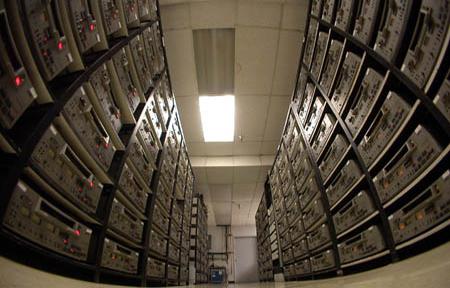
Crest National - One Bank of the Duplication Bay
Crest National has had a long-term relationship with the major airlines by supplying film product for inflight entertainment. The laboratory for years had supplied film prints, first in 16mm, then 8mm used in bulky onboard projection systems. With the advent of BetaMax and VHS tape formats, and later the introduction of 8mm digital video and DVD the servicing of aircraft systems, let alone the considerable weight savings became the benchmark for all airline entertainment. Crest National includes full support in postproduction, editing , subtitling, foreign language dubbing, full duplication facilities and is the largest purveryor of in-flight entertainment software in the world. The movie you saw on your last flight likely orginated at Crest National on systems designed and implemented by Jon.
MPEG Compression
MPEG compression is the staple of the DVD industry and Crest National was in the forefront of this process, even before DVD demand was created, our relationship with the airline entertainment industry lead to an early entry in this business. In a move that they hoped would remove more weight from the planes, and allow more choices for the passengers, installed MPEG I disc-based servers on selected aircraft. Crest National and Jon built their first compression bay in 1994. Technology rushed on and new suites were constructed for MPEG II, DVD authoring and the future. Real time HD compression is offered and has been utilized for storing program material on Qvis servers, and in some instances as 3D theatrical projection files.
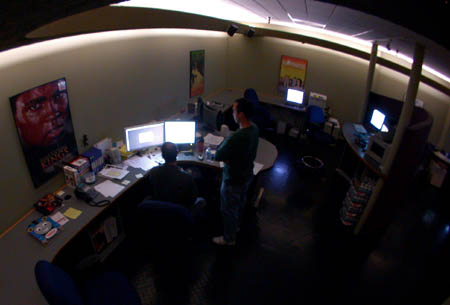
Crest National DVD Authoring Bay
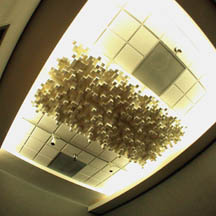
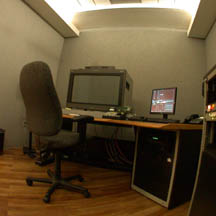
Acoustical Ceiling for HD QC HD QC Monitoring Bay
All Photography - Jon Truckenmiller